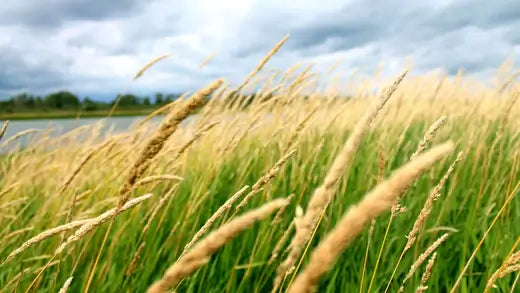Silver Maple Tree
Silver maple trees are heat-resistant, drought-tolerant, insect-resistant, cold-tolerant, compaction-tolerant, and disease-resistant. It can also grow well in wet soil and clay that could smother less hardy trees.
This silver maple prefers soil that is moist and well-drained. In the natural world, it is found near riverbeds, swamps, and floodplains. It can tolerate short droughts and return to health following a refreshing shower.
It is a temporary expander, reaching 6 feet of growth each year. It can grow to around a hundred feet at maturity, and its sizeable gorgeous canopy can go as wide as sixty feet. The crown is entirely circular.
A silver-colored maple gets its name from its five-lobed leaves. The leaves tops are vivid and medium-green shade. But the undersides of every leaf, as well as the stems, are silvery white. When the wind blows over the leaves, the tree is an ethereal silver cast visible from a distance.
Its silver maple bark is a rich dark brown that sheds its skin as it matures to ensure a long, healthy lifespan.
Trees that Grow Fast: 5 of the Best
A lot of the most famous trees are the ones that are multiplying. They allow homeowners to enjoy the benefits of an established plant earlier. Most people concentrate on the fast-growing shade trees and hedges to reap the benefits of these helpful landscaping strategies earlier.
The spring season is now in full flow. This is the best moment to plan your landscaping and choose the suitable greenery to meet your needs. If you're trying to improve the amount of vegetation around your property, immediately look at the rapid-growing plants and trees.
If you're looking to transform your landscape quickly, fast-growing trees are a great way. Whether it's adding privacy or shade, creating windbreaks, or attracting wildlife, trees can make all the difference in your backyard. And with these five trees specially selected for their quick growth potential and adaptability, you'll enjoy the transformation sooner! Stay tuned for the five best choices when it comes to fast-growing trees!
Mulberry Tree
Mulberry trees are deciduous trees native to North America, Europe, and Asia. It is a tree that thrives in a full-sun area and doesn't like being in the shade of trees. Instead, it would like to be the center of attention in your yard. Yes, it deserves this kind of focus.
Mulberry is located within the middle tree's height range. It is expected to grow at around thirty feet but will stop at about seventy feet. It has true green oval leaves that have softly edged edges.
Mulberry trees grow from a unidirectional central trunk. The branches will be strong and develop a uniform shape, with little trimming in the early growth stages.
Mulberry flowering trees (called catkins) appear in beautiful clusters in mid-spring. The flowers are white, creamy white, or white with a scent of spring green. The catkins sport a beautiful tubular shape, which makes room for the clusters of vibrant fruits in the springtime.
Hand-picking young trees harvest berries by reaching out for a giant Mulberry tree branch with an extended, strong pole and shaking the branches.
Sugar Maple Tree
In the forests of its native habitat, The sugar maple is found near riverbeds, swamps, and fertile floodplains. It is a fan of a well-drained area in your backyard. However, it can withstand dry spells and quickly spring after a refreshing rain.
The sugar maple needs plenty of woody organic material. Once you have planted your plant, add wood mulch, peat moss, another nitrogen-rich compost, or fertilizer before planting it. Then, add these items twice per year.
In addition to these requirements, your sugar maple will require very little from you, significantly when the roots are strengthened.
Sugar maple trees could grow to a height of around eighty feet. It will form a compact, rounded crown around forty feet across, providing plenty of shade.
Sugar maple leaves are approximately three inches long, lobed, opposite, and oblong. They are bright green in summer and spring and display red and orange in autumn.
Tulip Tree
The Tulip tree is drought-resistant, deer-resistant, and easy to care for. It is also possible to listen to Liriodendron tulipifera, also known by various other names that all refer to the same tree.
- Tulip Poplar
- Yellow Popular
- Yellow-Poplar
For a better chance of success, choose an utterly sunny area for the plantation of your tulip plant and provide it with sufficient "elbow room" to spread out when it expands.
At the beginning of development, it is essential to enrich your soil using organic material like what you would expect to find in the ground of a lush forest. Consider shredded leaf litter, organic compost, hardwood mulch, and peat moss. Keep the area mulched with these substances to supply nutrients to the tree, particularly during the winter when it is cooler climate zones.
The Tulip Tree is a North American native deciduous species that gardeners love as it has a faster growth rate than other trees. It thrives in almost every region within the continental United States.
The tulip tree is an imposing, elegant species that can attain an impressive height of up to 120 feet at maturation but typically remain at 90 feet. The trunk is upright, and the tree may be up to 6 feet in diameter. The bark transforms into a warm brown and develops beautiful furrows as it ages.
The leaves measure about six inches long, are four-lobed, and are alternated on the stems. Leaves are green on their top and lighter on their lower side. They turn amber and then bright yellow in autumn.
Red Maple Tree
This red maple is easy to maintain. It can meet its vital requirements when the tree is planted. The key is location. Choose a sunny area that can receive, at minimum, the equivalent of six hours of daily sunshine. The partial sun may suffice, though the colors might be less striking.
This species can be adapted to various soils, but the ground requires a woody material to grow when you plant it. Consider the conditions for growth in the native forests, which is logical! Improve the soil by adding hardwood mulch, Peat moss, leaf litter, or compost. Once you have planted, you'll only have to mulch around the tree once during spring and then again in autumn.
Once planted, the seedling requires around one inch of water per week, particularly in the summer when temperatures are sweltering. But the tree is expected to become drought-resistant after its roots become strong and healthy.
The first signs of spring are large stunning magenta, sparkling, or vivid red flowers that form incredible groups. They're a beautiful sight among the first bloomers to bloom in spring. The flowers have a pleasant floral scent that signifies spring's arrival.
The leaves unfold in a soft green color in the spring. They then turn into a dark green hue. They have three lobes extending six inches long and 2 to 4 inches wide. At the end of summer, the color changes once more to a deep red or copper--giving the tree its name.

















































